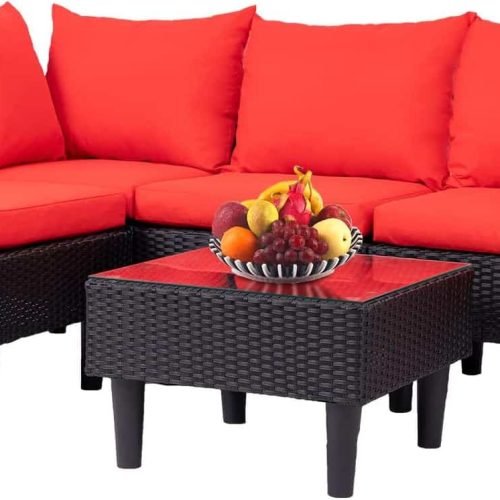Whats up guys its JV Charles .Did you know the Carlsbad Flower Fields in Southern California have 55 acres of ranunculus blooms? These flowers are open to the public for 6-8 weeks each spring. They are loved for their rose-like beauty and come in many colors. So pretty!
From soft pastels to bold jewel tones, ranunculus flowers have won the hearts of many. In this guide, we’ll dive into the world of ranunculus flowers. We’ll cover their history, symbolism, types, and how to care for them in your garden.
Whether you’re new to gardening or already love ranunculus, you’ll find everything you need here. You’ll learn how to grow and enjoy these stunning blooms.
Key Takeaways
- Ranunculus flowers come in a wide array of colors, including yellow, pink, orange, red, purple, and white.
- These perennials require specific growing conditions, such as full sun, well-draining soil, and mild temperatures.
- Proper care, including soaking corms before planting and protecting against pests, is essential for healthy ranunculus growth.
- Ranunculus flowers are known for their long blooming period, typically lasting 4-6 weeks.
- These flowers have a rich history and symbolize charm, attraction, and the early stages of romance.
Introduction to Ranunculus Flowers
Ranunculus flowers add beauty to gardens and bouquets. They belong to the Ranunculus genus and are part of the Ranunculaceae family. With over 600 species, these plants have multilayered petals that look like roses. They come in many colors like yellow, pink, orange, red, purple, and white. Gorgeous!
What are Ranunculus Flowers?
Ranunculus flowers are known for their delicate blooms. They add elegance to any setting. Some common species include the Carolina buttercup and the Persian buttercup. These flowers bloom in spring and may continue into early summer with care. Totally worth your time.
Ranunculus Flower Colors and Varieties
Ranunculus flowers come in a wide range of colors. Ranunculus varieties offer vibrant colors like yellow, pink, orange, red, purple, and white. Popular species include the Persian buttercup and the tecolote ranunculus, a hybrid from the 1950s in Southern California.
| Ranunculus Flower Color | Common Varieties |
|---|---|
| Yellow | Carolina buttercup (R. carolinianus) |
| Pink | Persian buttercup (R. asiaticus) |
| Orange | Tecolote ranunculus (R. hybridus) |
| Red | Persian buttercup (R. asiaticus) |
| Purple | Persian buttercup (R. asiaticus) |
| White | Persian buttercup (R. asiaticus) |
Ranunculus flowers are a stunning choice for gardens or arrangements. They come in many colors, including the classic Persian buttercup and the vibrant tecolote variety. These flowers are sure to delight and inspire anyone.
Growing Ranunculus From Corms
Ranunculus flowers add a magical touch to gardens with their bright colors. They grow from strong, swollen parts called corms. To get these beautiful flowers, it’s important to find high-quality ranunculus corms.
Sourcing Ranunculus Corms
There are many places to find sourcing ranunculus. You can check online stores, local nurseries, or specialty flower growers. When picking corms, choose plump, healthy ones without damage or disease. Make sure they fit your area’s climate and growing zone. Pretty simple.
Can I Grow Ranunculus from Seeds?
Yes, you can grow ranunculus from seeds, but it takes more work. Start seeds indoors 12 weeks before the last spring frost. Then, move them outside when it gets warmer. Growing from corms usually gives better results than from seeds.
Learning about ranunculus propagation helps gardeners grow these beautiful flowers. Whether you use corms or seeds, growing ranunculus is rewarding and exciting.
“Ranunculus corms are a heftier investment compared to seeds, but the results are often more consistent and reliable.”
Garden Conditions for Growing Ranunculus
Climate and Sunlight Requirements
Ranunculus flowers need the right garden conditions to look their best. They love full sun, needing 6-8 hours of sunlight each day. They do well in mild weather, between 55-70°F, and can handle light frosts.
However, they don’t like hot, humid weather. They prefer soil that drains well and is full of organic matter. This type of soil is rich and helps plants grow strong.
Ranunculus can grow in the ground or raised beds. Raised beds are best because they drain well. These flowers are hardy in USDA Zones 7-11. If you live in a colder zone, you might need to protect them from frost or grow them in pots.
| Climate Requirement | Sunlight Requirement | Soil Requirement |
|---|---|---|
| Mild temperatures (55-70°F), tolerates light frost | Full sun (6-8 hours per day) | Well-draining, loamy, rich in organic matter |
Knowing the ranunculus growing conditions helps gardeners create the best environment. This way, these beautiful flowers can grow and bloom fully.
When to Plant Ranunculus Corms
Choosing the right time to plant ranunculus corms is key for a beautiful garden. The best time to plant depends on your area’s climate and growing conditions.
In mild winter areas, like USDA zones 7-11, you can plant ranunculus in the fall. This lets the plants grow strong roots before they bloom in late winter and early spring. Planting in fall helps ranunculus grow well in these warmer places.
For colder zones, from 4-6, start ranunculus corms indoors in early spring. Then, move them outside. This method helps the plants get used to cooler weather and prepares them for the summer heat.
No matter your climate, plant ranunculus early to help them grow and bloom before summer. A good planting schedule is essential for enjoying these bright, beautiful flowers in your garden. Just what Ive found. Hope it helps you.
| Planting Season | Ideal Zones | Bloom Time |
|---|---|---|
| Fall | 7-11 | Late Winter – Early Spring |
| Early Spring (Pre-sprouted) | 4-6 | Late Spring – Early Summer |
Remember, when you plant ranunculus is very important for great results. By following these tips, you can make sure your garden is full of these lovely flowers.
Planting and Caring for Ranunculus
Ranunculus flowers are known for their bright, rose-like blooms. They need the right care to grow well. Here are the main steps to grow these beautiful flowers.
Soaking Ranunculus Corms
Many gardeners soak the ranunculus corms in room temperature water for 2-4 hours before planting. This helps the corms get rehydrated. It makes them less likely to break when planted. Sturdy is good. Right?
Planting Ranunculus Corms in the Garden
Plant the corms 2-3 inches deep and 6-9 inches apart in rich, well-draining soil with compost. They love full sun and need regular, moderate fertilizing. Make sure they have enough space and air to prevent diseases like powdery mildew.
With a bit of extra care, you can enjoy a lot of beautiful ranunculus flowers in your garden. You will be in love!
Ranunculus Flowers Pests and Protection
Ranunculus flowers are a favorite in gardens, but they face pests and challenges. Squirrels, raccoons, and gophers might dig up and eat the corms right after planting. To keep our ranunculus safe, we can use a wire grid or row cover. This creates a barrier to stop these pests.
Ranunculus can also get powdery mildew, a fungal disease. This can harm their health and beauty. Keeping air moving around the plants helps prevent mildew and keeps them healthy.
Usually, ranunculus don’t have big pest or disease problems if grown right. By protecting our plants and caring for them well, we can enjoy their beautiful colors every year. Thats a good thing.
| Pest/Disease | Description | Prevention/Control |
|---|---|---|
| Critters (Squirrels, Raccoons, Gophers) | These animals may dig up and eat the ranunculus corms, especially after planting. | Cover the planting area with a wire grid or row cover to create a physical barrier. |
| Powdery Mildew | A fungal disease that can compromise the health and appearance of ranunculus plants. | Maintain good air circulation around the plants to prevent the disease from spreading. |
“Ranunculus are generally low-maintenance flowers, but it’s important to be vigilant about pests and diseases to ensure their successful growth and bloom.”
Ranunculus Flower Meaning and History
Ranunculus flowers symbolize charm, attraction, and the start of romance. They have a long history, dating back to Persia and the Middle East. The Persian buttercup (R. asiaticus) was grown there for centuries.
A legend tells of a young Persian prince turned into a ranunculus flower. This was due to a curse from nymphs who loved his singing. This story links the flower to love, passion, and beauty. Ahhhhh!
In the 16th century, Europe discovered ranunculus. They quickly became a favorite spring flower. Today, these flowers are loved for their bright colors, from yellow to deep red. I love them all!
| Ranunculus Color | Symbolic Meaning |
|---|---|
| Yellow | Happiness, joy, celebrations, friendship |
| Red | Love, passion, romance |
| Pink | Romance, gentle feelings, gratitude |
| Purple | Beauty, mystery, royalty |
| White | Elegance, innocence, purity, sympathy |
Ranunculus are popular in wedding flowers and bouquets for their romantic look. Their petals reflect UV light, making them stand out and attract bees.
In gardens or bouquets, ranunculus capture hearts with their history and meaning. They represent charm, attraction, and the start of love. These flowers bring the beauty and joy of spring to life.
Conclusion
Growing ranunculus flowers is rewarding for gardeners who know what they need. With 1700 to 1800 species, these flowers come in many colors like bright yellows and deep reds. They can grow from corms or seeds, adding beauty to spring and early summer gardens.
To make sure these flowers bloom well, we need good soil, enough sunlight, and to plant at the right time. Some ranunculus species, like the creeping buttercup, can spread too much. But, there are many types that add beauty and variety to gardens and bouquets. Ranunculus flowers are often chosen for weddings and special events because they are so beautiful and last a long time.
Learning how to grow ranunculus flowers is a great project. It lets us add these lovely flowers to our gardens and flower arrangements. By understanding and appreciating ranunculus, we can enjoy the beauty and charm they add to our lives.
FAQ
What are Ranunculus flowers?
Ranunculus flowers are known for their beautiful, rose-like blooms. They come in many colors like yellow, pink, orange, red, purple, and white. These flowers symbolize charm, attraction, and the start of romance.
What are the different types of Ranunculus?
There are about 600 species of Ranunculus, making up the Ranunculus genus. Some well-known types include R. carolinianus (Carolina buttercup), R. flammula (lesser spearwort), R. repens (creeping buttercup), and R. asiaticus (Persian buttercup).
Can Ranunculus be grown from seed or do they require corms?
Ranunculus usually grow from corms, which store energy for the plant. While seeds can be used, corms give more reliable results.
What are the ideal growing conditions for Ranunculus?
Ranunculus need full sun for at least 6-8 hours a day. They do well in mild temperatures, 55-70°F, and soil that drains well and is rich in organic matter. Raised beds are best for their drainage.
When is the best time to plant Ranunculus corms?
Planting time varies by climate. In mild winter areas, plant in the fall for blooms in late winter and early spring. In colder zones, start the corms indoors in early spring before moving them outside.
How do I care for Ranunculus plants?
Soak the corms in water for 2-4 hours before planting. Plant them 2-3 inches deep and 6-9 inches apart in rich, well-draining soil. Ranunculus need regular, moderate fertilizing and good air flow to avoid fungal problems.
What are common pests and problems for Ranunculus?
Squirrels, raccoons, and gophers might dig up and eat the corms. Ranunculus can also get powdery mildew. Keeping air around the plants moving helps prevent this.
What is the meaning and history of Ranunculus flowers?
Ranunculus flowers symbolize charm, attraction, and romance’s early stages. They have a long history, starting with the Persian buttercup (R. asiaticus) in Persia and the Middle East. They were introduced to Europe in the 16th century.
Source Links
- https://freckledcalifornian.com/2024/03/29/how-to-grow-and-care-for-ranunculus/ – How to Grow and Care for Ranunculus
- https://www.longfield-gardens.com/article/all-about-ranunculus/ – All About Ranunculus
- https://www.bloom.gallery/california-ranunculus-flower-delivery-sf/ – Blooming California: Discover The Beauty Of Ranunculus | Florist San Francisco
- https://urbanstems.com/ranunculus – Urbanstems
- https://www.floretflowers.com/resources/how-to-grow-ranunculus/ – Floret’s How to Grow Ranunculus
- https://www.sierraflowerfarm.com/blog/2020/2/25/nitty-gritty-pre-sprouting-ranunculus-amp-anemone-corms – Pre-sprouting ranunculus & anemone corms — Sierra Flower Farm
- https://www.longfield-gardens.com/article/10-tips-for-growing-ranunculus – 10 Tips for Growing Ranunculus
- https://www.bhg.com/how-to-plant-and-grow-ranunculus-7551456 – How to Plant and Grow Ranunculus
- https://www.sierraflowerfarm.com/blog/2017/6/1/flower-of-the-month-ranunculus – Ranunculus — Sierra Flower Farm
- https://grow.edenbrothers.com/planting-guide/ranunculus-bulbs/ – How to Plant Ranunculus Bulbs – Eden Brothers Planting Guides
- https://www.thespruce.com/ranunculus-7104375 – How to Grow and Care for Ranunculus Flowers
- https://www.blossomingbough.com/blog/2020/9/30/how-to-grow-and-store-ranunculus – How to Grow and Store Ranunculus — Blossoming Bough Flowers
- https://www.trademarksflowers.com/blog-/how-to-grow-amazing-ranunculus – How To Grow Amazing Ranunculus — Trademarks Flower Farm
- https://growingformarket.com/articles/early-season-income-ranunculus-and-anemones-part-ii – Early season income with ranunculus and anemones part II
- https://www.lovingly.com/flower-meanings/ranunculus – Ranunculus – Flowers – Featured Content – Lovingly
- https://orchidrepublic.com/blogs/news/radiant-ranunculus-and-flower-meanings – Radiant Ranunculus and Flower Meanings
- https://anahanaflower.com/blogs/flower-101/all-about-ranunculus – All about Ranunculus
- https://mollyoliverflowers.com/blogs/seasonal-flower-library/ranunculus – Ranunculus
- https://lovflowers.co.uk/blogs/news/ranunculus – Ranunculus Flower Guide | LOV Flowers






